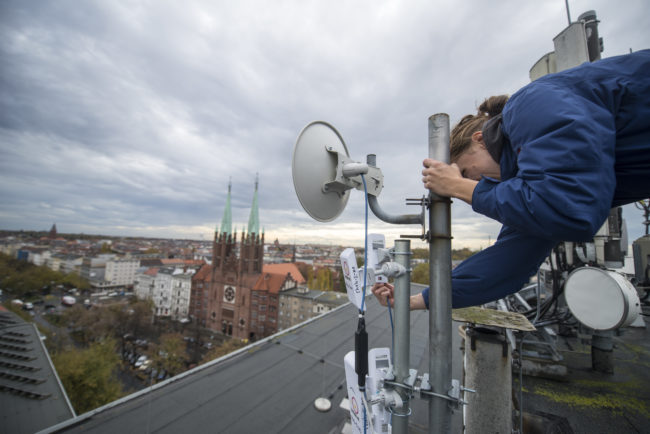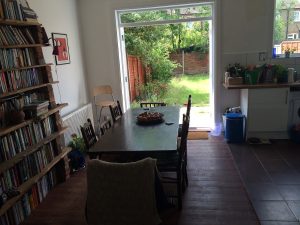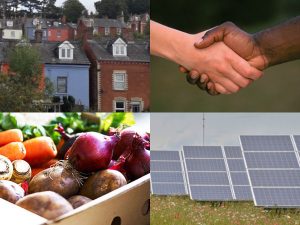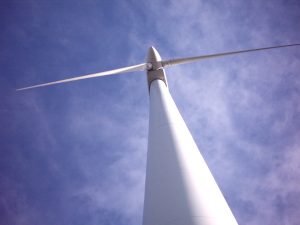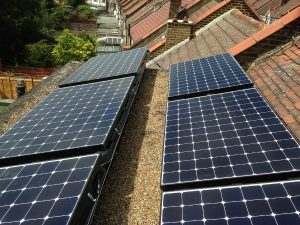A solution to the absence of high-speed wireless networks across some developing countries and increasingly appearing in the form of WiFi based community networks in numerous countries in Europe, building a low-tech internet could have benefits for all. With excerpts from an original Low-tech Magazine article by Kris De Decker, we explore how a less resource-intensive and more energy-efficient approach to internet access could provide a resilient cooperative network with renewable energy at its heart.
There are currently a variety of systems at the core of the low-tech internet movement, one of which is long-range WiFi. It is dependent on point-to-point links and can function as a local network, allowing localised communication and viewing of sites specifically developed on it, but requires a gateway node in the form of a dial-up or broadband connection to enable access to the wider worldwide web. In this way, long-range WiFi offers high bandwidth, low capital costs, easy installation and low power requirements (making use, for example, of solar powered nodes).
Successful implementation of such systems can be found in India and South Africa, amongst others. They also form the backbone of vital telemedicine networks in Latin America and Malawi, to name but a few, often using renewable energy in the form of solar power. In Europe, meanwhile, isolated rural communities and even those in cities are adopting long-range WiFi to their advantage, independently building, using, powering and maintaining their own infrastructures on a grassroots level. Examples include Guifi in Spain, the Athens Wireless Metropolitan Network (see video), Freifunk in Germany and FunkFeuer in Austria.
After long-range WiFi, an even more energy-efficient example of a low-tech internet network, suited to locations with a potentially intermittent energy supply comes in the form a delay-tolerant network or DTN, as described by Kris De Decker below:
Delay-tolerant networks don’t require an end-to-end path between source and destination. Data is simply transferred from node to node. If the next node is unavailable because of long delays or a power outage, the data is stored on the hard disk until the node becomes available again. While it might take a long time for data to travel from source to destination, a delay-tolerant network ensures that it will eventually arrive.
Delay-tolerant networks further decrease capital costs and energy use, leading to the most efficient use of scarce resources. They keep working with an intermittent energy supply and they combine well with renewable energy sources: solar panels or wind turbines could power network nodes only when the sun shines or the wind blows, eliminating the need for energy storage.
The proliferation of DTNs has in turn led to the development of new software and ways of searching and browsing which are capable of functioning without the need for a connected end-to-end networking path. Another innovation linked to DTNs is that of so-called data mules, commonly buses, cars or motorcycles fitted with a computer, storage device and a mobile WiFi node which connect to a stationary node in each village on their route, transferring data in a store-and-forward manner which is disconnection tolerant.
Here, examples include DakNet, currently operating in India, and Kiosknet. The use of so-called sneakernets, by which a physical rather than virtual transfer of data occurs using a portable storage device (whether a USB pen, CD, DVD or flashcard) delivered by data mules, is also playing a key role and is arguably the ultimate low-impact method of transferring large amounts of data.
So what does the future hold for low-tech internet networks? Kris De Decker of Low-tech Magazine summarises as follows:
While most low-tech networks are aimed at regions where the alternative is often no internet connection at all, their usefulness for well-connected areas cannot be overlooked. The internet as we know it in the industrialized world is a product of an abundant energy supply, a robust electricity infrastructure, and sustained economic growth. This “high-tech” internet might offer some fancy advantages over the low-tech networks, but it cannot survive if these conditions change. This makes it extremely vulnerable.
Depending on their level of resilience, low-tech networks can remain in operation when the supply of fossil fuels is interrupted, when the electricity infrastructure deteriorates, when the economy grinds to a halt, or if other calamities should hit. Such a low-tech internet would allow us to surf the web, send and receive e-mails, shop online, share content, and so on. Meanwhile, data mules and sneakernets could serve to handle the distribution of large files such as videos. Stuffing a cargo vessel or a train full of digital storage media would beat any digital network in terms of speed, cost and energy efficiency. And if such a transport infrastructure would no longer be available, we could still rely on messengers on foot, cargo bikes and sailing vessels.
Such a hybrid system of online and offline applications would remain a very powerful communication network — unlike anything we had even in the late twentieth century. Even if we envision a doom scenario in which the wider internet infrastructure would disintegrate, isolated low-tech networks would still be very useful local and regional communication technologies. Furthermore, they could obtain content from other remote networks through the exchange of portable storage media. The internet, it appears, can be as low-tech or high-tech as we can afford it to be.
Perhaps most excitingly, the rise of low-tech internet movements represents the beginnings of a democratisation of media networks that is truly accessible, as Freifunk describe on their website:
More and more people are single-handedly installing and maintaining free networks. Every user in the free wireless network provides his or her wireless LAN router for data transfer to other participants. In return, he or she can also transmit data, such as text, music and movies through a free internal network or use services setup by participants to chat, call or play online games. We use mesh networks.
Many also share their internet access and allow others to use it to access the World Wide Web. Free wireless are DIY-networks. We use our own freifunk firmware a special Linux distribution, on our WLAN routers.
Local communities provide software adapted to their own needs and then on their websites. There are more and more free wireless groups that meet regularly access in villages and cities.
The freifunk community is part of a global movement for free infrastructure and open frequencies. Our vision is the democratization of the media through free networks. Free wireless communities implement this idea worldwide.
In all, the rise of low-tech internet networks marks an exciting chapter, empowering communities across the world to bypass standard corporate offerings by promoting the use of open-source software such as Linux and small-scale renewable energy installations. It’s a great example of a DIY non-corporate alternative that’s happening right here, right now and we look forward to seeing what the future holds.
You can find the original article How to Build a Low-tech Internet authored by Kris De Decker and edited by Jenna Collett in full here, with thanks to Low-tech Magazine for permitting use of article excerpts. If you’re interested in learning more about the high impact energy consumption of the wider internet in general, another of their articles is also worth a read. Finally, for more about how you can work towards a more low-impact technological footprint, visit our Low-impact IT topic page.

